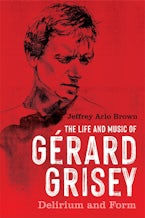
Title Details
324 Pages
22.8 x 15.2 cm
200 music exx. and 14 b/w illus.
Series: Eastman Studies in Music
Series Vol. Number:
184
Imprint: University of Rochester Press
The Partimenti of Giovanni Paisiello
Pedagogy and Practice
- Description
- Contents
- Author
Reveals the brilliant musical and pedagogical thinking of the famed eighteenth- and early nineteenth-century Neapolitan composer and teacher of royal students.
Giovanni Paisiello (1740-1816) was one of the most important composers of opera in the eighteenth century. His operas were performed throughout Europe, and his fame led to appointments as a maestro di cappella and composer at prominent European courts. This book is the first study to address his work as a teacher of composition and what we would today call music theory.
The practice of partimento (figured or unfigured bass lines) was an integral part of the training of musicians at the renowned conservatories in eighteenth-century Naples. By employing these often-unprepossessing partimento bass lines, young musicians learned the techniques of variation, improvisation, and composition while seated at the harpsichord.
Paisiello's Regole per bene accompagnare il Partimento (Rules for Harpsichordists; 1782) survives in both autograph and printed forms. It contains forty-six partimenti that have long been considered the core of his pedagogic oeuvre. However, two recently discovered manuscripts contain a further forty-one unknown partimenti, notated as two- and three-part disposizioni (realizations).
The present study offers numerous insights gleaned from the surviving sources and bolsters our understanding of how to perform the music of Paisiello and his contemporaries: music that has often survived in an incomplete form. These findings are relevant not just for keyboard players but also for singers, instrumentalists, and anyone interested in the inner workings of eighteenth- and early nineteenth-century music.
Giovanni Paisiello (1740-1816) was one of the most important composers of opera in the eighteenth century. His operas were performed throughout Europe, and his fame led to appointments as a maestro di cappella and composer at prominent European courts. This book is the first study to address his work as a teacher of composition and what we would today call music theory.
The practice of partimento (figured or unfigured bass lines) was an integral part of the training of musicians at the renowned conservatories in eighteenth-century Naples. By employing these often-unprepossessing partimento bass lines, young musicians learned the techniques of variation, improvisation, and composition while seated at the harpsichord.
Paisiello's Regole per bene accompagnare il Partimento (Rules for Harpsichordists; 1782) survives in both autograph and printed forms. It contains forty-six partimenti that have long been considered the core of his pedagogic oeuvre. However, two recently discovered manuscripts contain a further forty-one unknown partimenti, notated as two- and three-part disposizioni (realizations).
The present study offers numerous insights gleaned from the surviving sources and bolsters our understanding of how to perform the music of Paisiello and his contemporaries: music that has often survived in an incomplete form. These findings are relevant not just for keyboard players but also for singers, instrumentalists, and anyone interested in the inner workings of eighteenth- and early nineteenth-century music.
Preface and Acknowledgments
Preliminary Remarks
Abbreviations
Illustrations
Introduction
Chapter 1 Giovanni Paisiello, Composer and Teacher
Chapter 2 The Sources
Chapter 3 Instruction at the Conservatories
Chapter 4 Paisiello's Regole (1782)
Chapter 5 Practical Examples from Paisiello's Circle
Chapter 6 The Practical Application of Partimenti Today
Afterword
Appendix I Incipits and Sources for the Partimenti of Giovanni Paisiello
Appendix II Concordance for the Sources of Giovanni Paisiello's Partimenti
Appendix III Disposizioni à 2 and Disposizioni à 3 on Partimento Gj2319 by Giovanni Paisiello
Appendix IV Partimenti from Giovanni Paisiello's Regole (1782)
Appendix V Historical Realizations of Partimenti by Francesco Durante from The Vessella Manuscript and The Gallipoli Manuscript
Appendix VI "Preludio" and "Rondò" in B-flat major by Giovanni Paisiello, both in the Original Version and in a Suggested Variation by This Author
Appendix VII Emanuele Imbimbo: Observations sur l'enseignement mutuel (1821)
Appendix VIII A Solfeggio Attributed to Giovanni Paisiello in its Original Version and with a Varied Upper Voice by This Author
Appendix IX Giovanni Paisiello, Regole per bene accompagnare il Partimento, St. Petersburg, 1782
Appendix X Newly Discovered Partimenti by Giovanni PaisielloPrimary sources
Manuscripts
Publications
Bibliography
Electronic Resources
Index
Preliminary Remarks
Abbreviations
Illustrations
Introduction
Chapter 1 Giovanni Paisiello, Composer and Teacher
Chapter 2 The Sources
Chapter 3 Instruction at the Conservatories
Chapter 4 Paisiello's Regole (1782)
Chapter 5 Practical Examples from Paisiello's Circle
Chapter 6 The Practical Application of Partimenti Today
Afterword
Appendix I Incipits and Sources for the Partimenti of Giovanni Paisiello
Appendix II Concordance for the Sources of Giovanni Paisiello's Partimenti
Appendix III Disposizioni à 2 and Disposizioni à 3 on Partimento Gj2319 by Giovanni Paisiello
Appendix IV Partimenti from Giovanni Paisiello's Regole (1782)
Appendix V Historical Realizations of Partimenti by Francesco Durante from The Vessella Manuscript and The Gallipoli Manuscript
Appendix VI "Preludio" and "Rondò" in B-flat major by Giovanni Paisiello, both in the Original Version and in a Suggested Variation by This Author
Appendix VII Emanuele Imbimbo: Observations sur l'enseignement mutuel (1821)
Appendix VIII A Solfeggio Attributed to Giovanni Paisiello in its Original Version and with a Varied Upper Voice by This Author
Appendix IX Giovanni Paisiello, Regole per bene accompagnare il Partimento, St. Petersburg, 1782
Appendix X Newly Discovered Partimenti by Giovanni PaisielloPrimary sources
Manuscripts
Publications
Bibliography
Electronic Resources
Index
Hardcover
9781648250361
September 2022
$85.00 / £70.00
Ebook (EPDF)
9781800105478
September 2022
$29.95 / £24.99
Title Details
324 Pages
2.28 x 1.52 cm
200 music exx. and 14 b/w illus.
Series: Eastman Studies in Music
Series Vol. Number:
184
Imprint: University of Rochester Press














